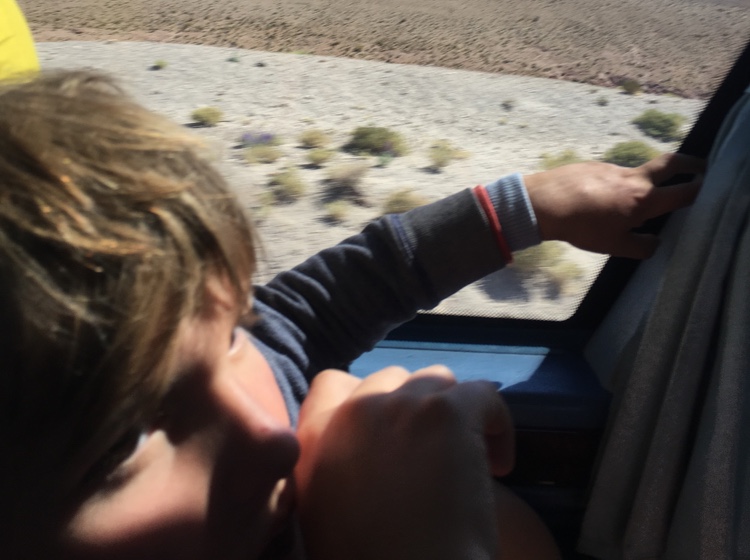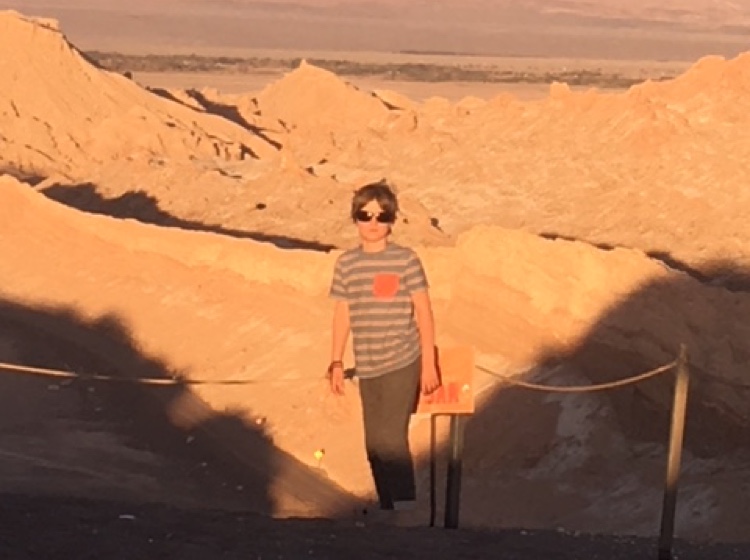Our first morning and our last morning were my best times in Cuenca. On the first morning, the kids were still reeling from the previous day’s nine-hour bus ride from Baños and wanted to chill out in the hotel room on the internet. So Sarah and I walked around the town on our own, which I realized (like someone waking from a dream) is a completely different experience than walking around with your kids. We covered so much ground in so little time. We dipped into ancient churches (there’s one on almost every corner in this colonial town) and visited mercados to buy Julian some birthday gifts (he turned 9 on July 22nd). We bought him things no 9-year-old can do without, like pens with llamas on top and chocolate guinea pigs. We considered buying him a small yet dashing Panama hat (they invented them here but whatever you do DON’T CALL THEM PANAMA HATS or they will get pissed off — they’re MONTECRISTO HATS, and don’t you forget it), but we realized that this was more something we wanted to see on him that something he would like to be seen in. (I ended up buying one for myself.)
We also found the best yogurt I’ve ever had, which sounds like a weird thing to rave about, but it was THAT GOOD. Ice cold, refreshing, tart blackberry yogurt. You drink it from a chilled glass tumbler (all the yogurt so far in South America is more drink than food).
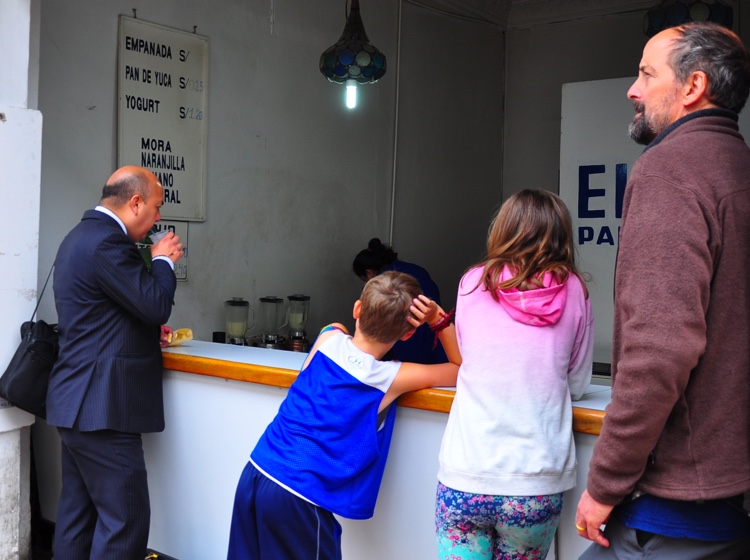
On the last morning, we woke up and went to a mercado we hadn’t visited before on the trail of the “baby-spirit cleaning ceremony.” This is the poor translation of a ceremony performed in Cuenca by stern, poker-faced women. We learned about it from a guide we’d had the day before, who swore that the ritual, which involves rolling an egg across the surface of the skin, had cured his 4-year-old of some “bad energy.” This ceremony was one of the more memorable things I’ve seen on this trip.
In between these two mornings…well, have you ever visited a place where you just felt a step out of synch? Like you just can’t quite get into it? Like every time something looks promising, you come across a closed (cerrado) sign? Like when you’ve looked forward to seeing an amazing shrunken head collection at a museum, and that one exhibit is closed for renovation? That was me and Cuenca. Our travelers’ luck also seemed to be temporarily shut down.
We bounced between three hotel rooms the first three nights. The first was too close to the lobby and too noisy. The second (in a different hotel) was above a bar and, as it turned out, even noisier (Ecuadorians are completely shameless when it comes to karaoke. This is charming when you aren’t trying to sleep above them.) The third was the most expensive room we’ve had on this trip ($90 a night) and featured no windows. The presence of so many retired ex-pats (elderly Gringos dot every restaurant) had driven up prices. This place is not a well-kept secret.
When we tried daytrips outside Cuenca, our luck was no better. We negotiated the very crowded public bus to get to local craft towns only to find no crafts. (Although Julian did find someone who let him ride on an ATV for $1.50, so it was a sparkling success for him.)
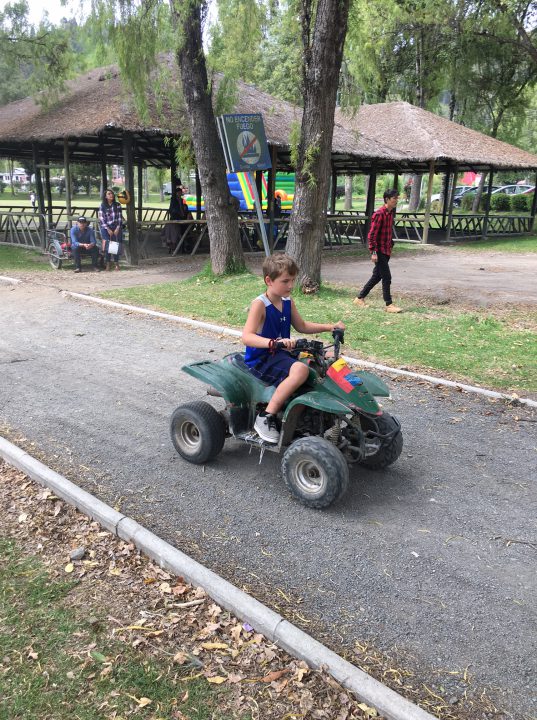
We took a tour of Cajas National Park, and while we were wowed by spectacular scenery and some exotic birds, we pretty near froze to death — it rained on us almost the whole day.
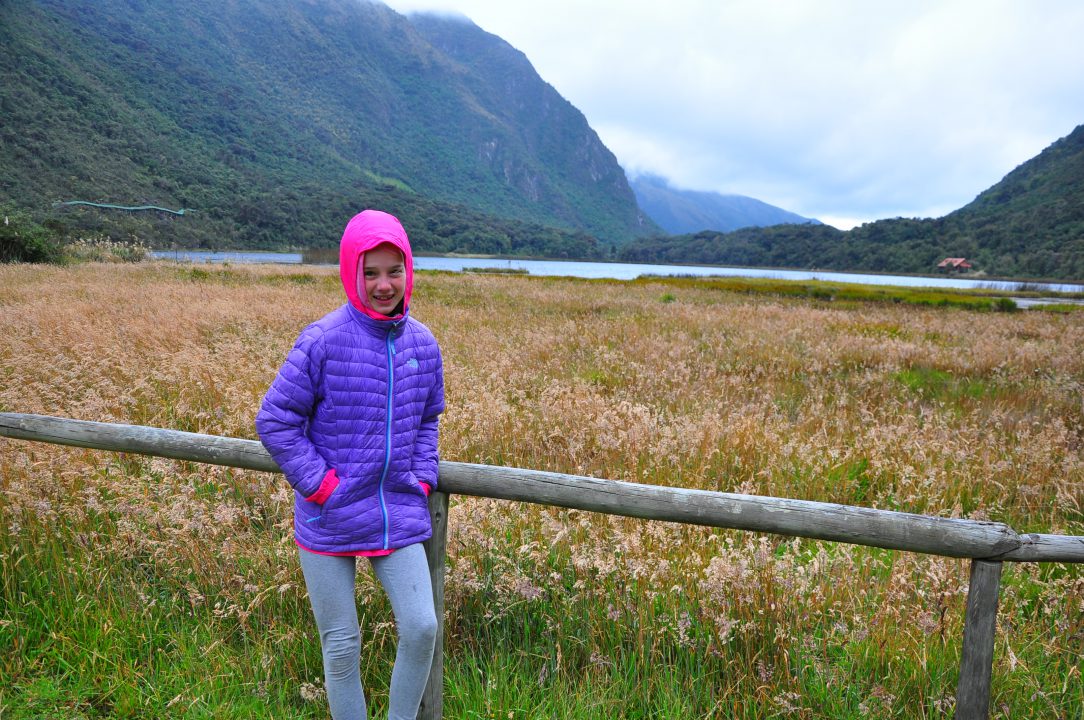
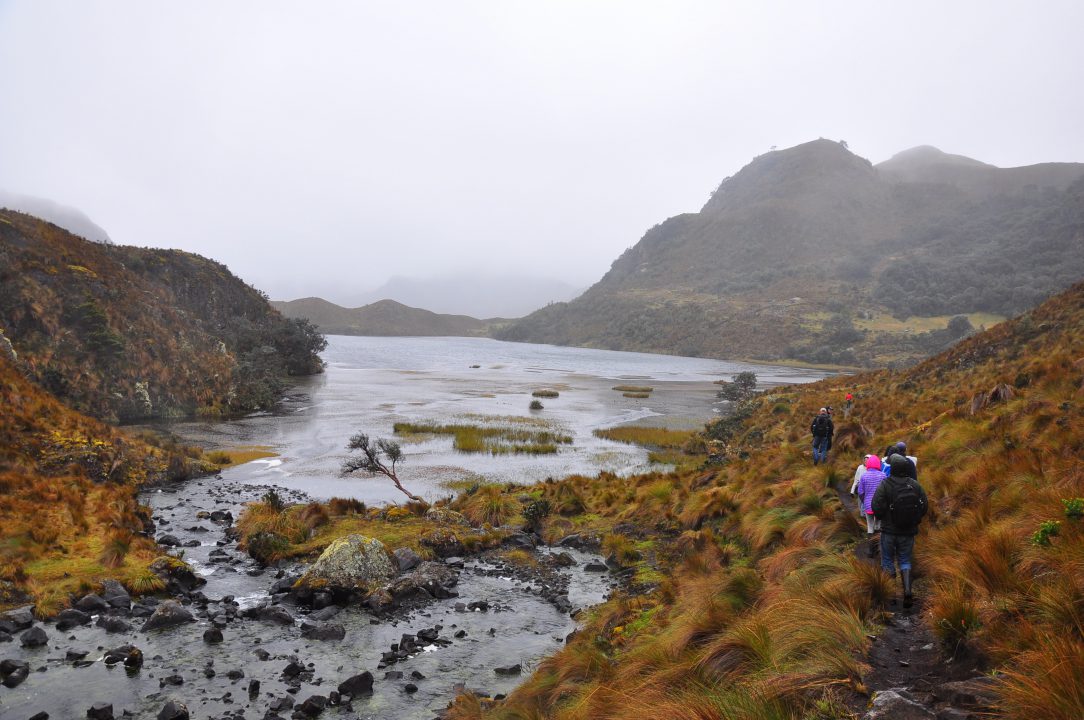
The combination of the altitude and the cold was particularly rough on me, and I was very impressed that the kids made it through the rigorous and very slippery 8-mile hike without complaining despite being soaked and frozen (yes, they made me look like a total weenie). When we came to our lunch stop, I ordered a pitcher of canelazo (my new favorite drink: rum, hot water and cinnamon) and nearly chugged it to get the chill out of my bones. It didn’t work. I felt the symptoms of a bad cold coming on.
Yes, we were having adventures in Cuenca, but most of them seemed like experiences to be endured instead of savored. Traveling involves a lot of hassle — finding an ATM that won’t tell you your card’s been blocked; constantly making sure you have all your essential belongings; working through language barriers to get anywhere, etc. — and there are days when the hassles take over and it seems like there’s no fun in sight. You expect days like this once in a while, but in Cuenca there were too many for me. On our last night, I was making my way down the stairs from the kids’ sleeping loft…

My stocking feet slid out from under me on the varnished wood and I fell down the last couple stairs, splitting open the small of my back on the edge of the bottom stair. Nothing was broken, thank God, but the pain was intense, and I cried like a baby while Sarah washed out my wounds.
The next morning I woke and wrote this:
Cuenca, Cuenca
You’re driving me to drinka
Another jarra of canelazo please
If I can slurp some down before my next sneeze
Freezing in the morning, baking in the afternoon
Cuenca will you decide what you are anytime soon?
Cuenca, Cuenca
You’ve pushed me to the brinka
Charming colonial town that I just can’t get
Or find a place to stay that doesn’t leave me in debt
Or find a museum that isn’t closed for renovations
Or find an artisan who isn’t selling factory-made creations
Bad karaoke through the walls keeps us up at night
And no decent Wifi! Cuenca, is that right?
Anyway, you get the picture: Cuenca had turned me into a cranka.
Then, with a morning to spare before our afternoon van to Vilcabamba, we ventured into the mercado where, according to our Cajas guide, a ritual was performed on Tuesdays and Thursdays to remove curses and bad spirits from children — and, as it turned out, adults.
One of my favorite things about traveling is seeing something quite extraordinary that is, to the people living there, quite ordinary. This was such a scene.
It took us a while to find the area where the women were working; we walked right passed them the first time, assuming they were selling vegetables (each practicante is surrounded by various baskets of herbs which she uses to flog her customers). I finally asked a woman selling eggs in a desperate kind of Spanish where we might find a ceremonia involving ninos and huevos. She eventually got the picture and said, “Ah, la limpieza.” (The cleaning.) She directed us to an area on the first floor of the mercado beneath the stairs, where we found about a dozen solemn women, all in indigenous clothes with red vests, attending to various children (and a couple adults). The ritual starts with rolling an egg all over the customer’s body. (We were trying to be discreet and not the gawking tourists that we were, so our photo-taking was limited. But here are two shots of some egg-rolling.)
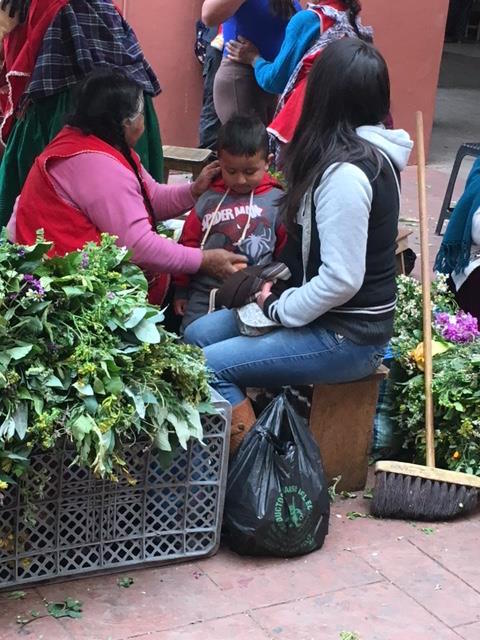
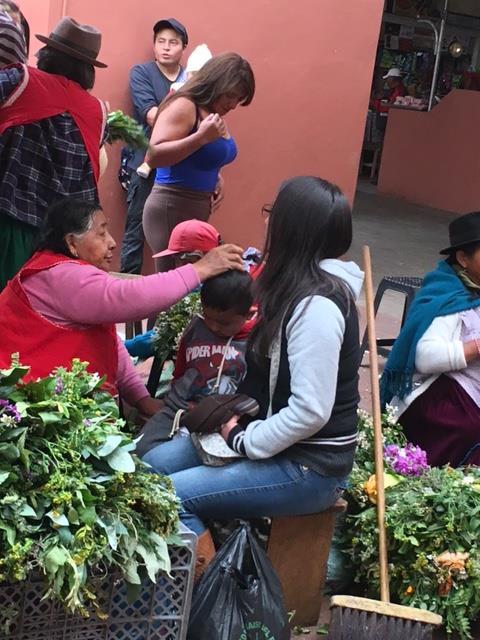
This egg is a diagnostic tool – it’s subsequently cracked into a glass and is analyzed by the practicante to figured out what’s wrong with the customer. After making her diagnosis (and discussing it with the customer and/or the customer’s parents), she then chants and sings while flogging the customer with various herbs — really hitting them with bunches of plants. They’re really rough about it. We watched a young boy getting slammed repeatedly in the face with greens. After a lot of this, the practicante spits a shower of a liquid — our guide said it was usually some kind of liquor — over her customer. (I also saw one child showered with some kind of flower petals from the mouth of a practicante.) The final act is a cross drawn on the forehead, the stomach, and the base of the spine with what looked like some kind of mud. After this, money is exchanged and the child rejoins their parent.
(If there are any doubters out there, google “limpia con huevo.” There’s even a Youtube video on how to interpret an egg.)
The children we watched being treated in these ceremonies took getting spat at and beaten by plants with remarkable stoicism. I offered Cleo and Julian a chance to have themselves cured spiritually and otherwise, but they not surprisingly declined. I felt completely open-minded about the ritual’s possible positive attributes – after all, I’ve been in therapy for over two decades so I’m clearly open to anything. I was tempted to subject myself to it (I still felt a cold coming on from Cajas and can definitely always improve), but something held me back, in the same way I didn’t want Billy from Quito to tell me what color my aura was. Still, watching the ceremony performed repeatedly in the colorful, vibrant market had its own cleansing effect on me; it exorcised whatever negativity I held about Cuenca. There was, after all, a point to our being here: It was everywhere I looked.


